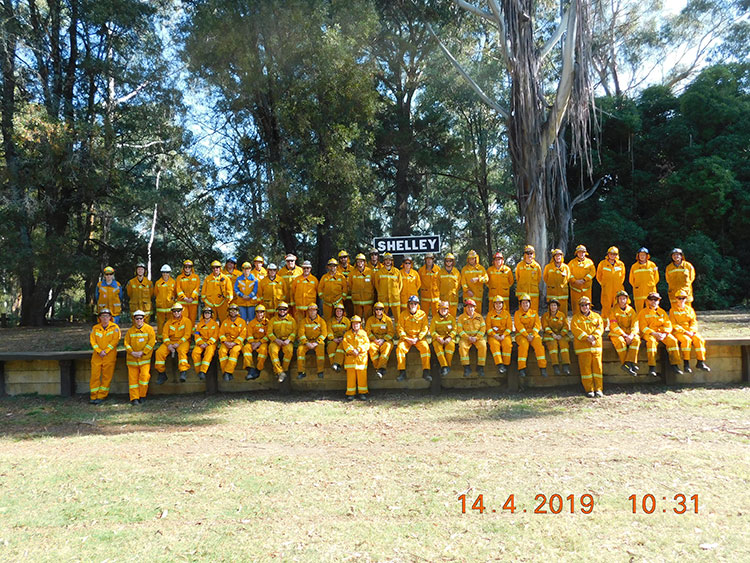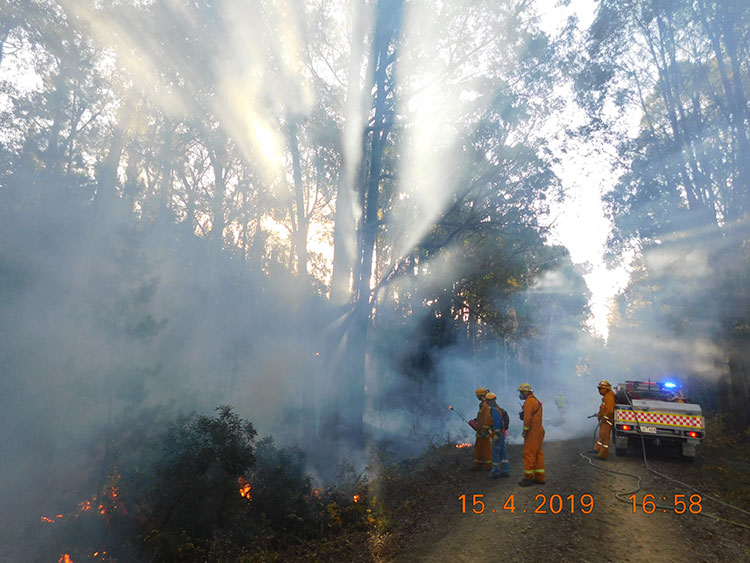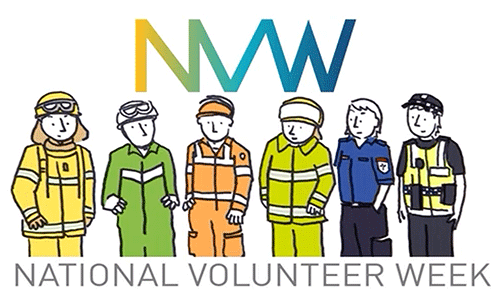North East Region Burn Camp – Shelley 2019
As National Volunteer Week 2019 continues, one CFA volunteer recounts some recent lessons in cultural heritage and how learning lessons from the past can change how we think of planned burns.
Constant learning, training and skills development is all part of the professionalism CFA volunteers show in their commitment to safety in their communities. Through it, they make a world of difference to the safety of Victorians
By Michelle Ryan, Benalla CFA volunteer and VFBV Support Officer North East Region.
“Is ‘planned burning’ a stepping stone to ’cultural cool burning’? Yes – I believe it can be.”
I was lucky to be nominated and attend the North East Region Burn Camp No2, held at the HVP Shelley Forest camp from 13-16 April 2019. We were given pre-attendance videos to watch and a pre-event assignment to hand over on arrival and induction at the base camp. The camp was extremely well organised and structured over the four days, with dedicated, knowledgeable and experienced instructors overseeing every aspect of our daily practical work experience.
A SMEACS – (situation, mission, execution, administration, command/comms, safety) briefing was given at the beginning of each day, with 42 attendees allocated into groups for the next four days. On day two we were privileged to have Michael Sherwen (Mick), CFA Cultural Heritage Advisor, work with us and give a talk that evening. Mick explained how planned burning can be a progression to cool burns, so that we are doing less damage to the environment and protecting heritage buildings and sites. This includes flora and fauna, native animals and soil biomass, among other things, to help protect our ecosystem.
I highly recommend these burn camps to any volunteers and encourage them to attend camps in their regions, as this is an amazing opportunity to learn new skills and update our skills maintenance in a controlled and safe environment. I now have a greater understanding and knowledge base of how much work, pre and post burn needs to be done to achieve the right outcome. The skills learnt at this camp are a stepping stone to cool burns.
We need to understand the complexities of planned burning in order to appreciate the simplicity of Cultural burning. Planned burning gives us an understanding of fire behaviour, which is influenced by fuel, weather and topography and all matters associated with these. By having a sound understanding of fire behaviour based on these principles we can then apply these principles to the introduction of a ‘low intensity’ fire that we know will not travel quickly or scorch the ground and what lies underneath it and will not harm the canopy.
Duncan Terry, 1st Lt Toolamba CFA, agrees: “Cultural burning was used for thousands of years to manage fire in the landscape without the need for machinery or firefighting equipment by understanding fire and fire behaviour and choosing the conditions appropriate to the purpose of the burn. The camp also provides an environment for completing the practical assessment of the Burn Controllers qualification.”
Another participant, Colin James from Toolamba CFA, said the camp was a very intense four days. “You learn a lot about fire behaviour and how it can be used not only for prescribed burns but for fire suppression as well. It was a very rewarding experience, where a group of mostly unknown people quickly form into working teams with a very positive spirit and great camaraderie. It was great to have the time to actually observe fire behaviour.
Rather than our usual priority of just putting the fire out as soon as we can, we were watching it burn and getting a new appreciation of the interaction of fuel, terrain and weather, especially with the highly experienced instructors there to help.”
Skills taken away from this camp included working in a diverse team environment with strangers, fuel loads, fuel moisture content, weather conditions, resource deployment, risk assessment, sectorisation, command/comms, tree hazard awareness, correct preparation of burn site, rake hoe skills and efficiency of conserving valuable water with limited supply available.
Thank you to the Instructors involved – Phil Hawkey – Phil Browne – John Kneebone (Bones) - Mitch Emmett – Mark Barille – Tony Siccluna – Eain McRae – Roger Strickland – Av Weber - Tom Ellingsworth – John Rhodes – George Kucka.
Interested in a burn camp or other training? Keep an eye on CFA Brigades Online training section for upcoming burn camps or contact your local VMO (Vegetation Management Officer) or VFBV representatives for information. VFBV will promote future camps as we become aware of them.


 |
This article is part of our National Volunteer Week Showcase - celebrating our wonderful CFA Volunteers. |
 |
About VFBV: VFBV is established under the Country Fire Authority Act and is the peak body for CFA Volunteers in Victoria. VFBV works tirelessly to represent, advocate and support CFA volunteers to the CFA Board and management, governments, ministers, members of parliament, councils, instrumentalities, business and the public. Our vision is for Strong Volunteerism, Embraced to Build Community Resilience for a Safer Victoria. |
 News
News 
